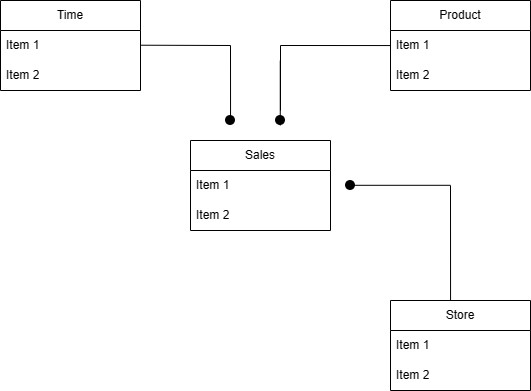
 Data Structure
Data Structure Networking
Networking RDBMS
RDBMS Operating System
Operating System Java
Java MS Excel
MS Excel iOS
iOS HTML
HTML CSS
CSS Android
Android Python
Python C Programming
C Programming C++
C++ C#
C# MongoDB
MongoDB MySQL
MySQL Javascript
Javascript PHP
PHP
- Selected Reading
- UPSC IAS Exams Notes
- Developer's Best Practices
- Questions and Answers
- Effective Resume Writing
- HR Interview Questions
- Computer Glossary
- Who is Who
Conceptual Database Design
Conceptual database design is the process of identifying the essential data elements, relationships, and constraints in a data model, which represents a particular organization's business requirements. The conceptual design stage is the first step in the database design process, which precedes the logical and physical design stages. In this article, we will discuss the conceptual database design, its objectives, its process, and the key components of a conceptual data model.

Objectives of Conceptual Database Design
The primary objective of conceptual database design is to create a high-level data model that reflects the business requirements and provides a clear understanding of the data elements, relationships, and constraints involved. This data model serves as a blueprint for the logical and physical database design stages. The key objectives of conceptual database design are as follows ?
Identify the entities and their attributes ? Entities are objects or concepts that exist in the real world and can be distinguished from each other. Attributes are the properties or characteristics of the entities. The first objective of conceptual database design is to identify the entities and their attributes that are relevant to the organization's business requirements.
Define the relationships ? Relationships are the associations between entities. The second objective of conceptual database design is to define the relationships between the identified entities. Relationships can be one-to-one, one-to-many, or many-to-many.
Establish the constraints ? Constraints are the rules that govern the relationships between entities. The third objective of conceptual database design is to establish the constraints between entities, which ensure data consistency and integrity.
Process of Conceptual Database Design
The process of conceptual database design involves the following steps ?
Requirements gathering ? The first step in conceptual database design is to gather the business requirements from the stakeholders. This involves identifying the data elements, relationships, and constraints that are essential to the organization's business requirements.
Entity-relationship modeling ? The second step in conceptual database design is to create an entity-relationship (ER) model, which represents the entities, attributes, and relationships between the entities. The ER model is a graphical representation of the data elements and their relationships.
Normalization ? The third step in conceptual database design is to normalize the ER model, which ensures that the data is organized efficiently and reduces data redundancy
Review and feedback ? The fourth step in conceptual database design is to review the ER model with the stakeholders and incorporate their feedback into the design.
Components of Conceptual Data Model
The key components of a conceptual data model are as follows ?
Entities ? Entities are objects or concepts that exist in the real world and can be distinguished from each other. Examples of entities include customers, orders, products, and employees.
Attributes ? Attributes are the properties or characteristics of the entities. Examples of attributes include name, address, date of birth, and product code.
Relationships ? Relationships are the associations between entities. Examples of relationships include a customer placing an order, an employee managing a department, and a product belonging to a category.
Cardinality ? Cardinality is the number of instances of an entity that can be associated with instances of another entity. Examples of cardinality include one-to-one, one-to-many, and many-to-many relationships.
Constraints ? Constraints are the rules that govern the relationships between entities. Examples of constraints include referential integrity, which ensures that a foreign key value in one table matches a primary key value in another table, and uniqueness, which ensures that a field value is unique within a table.
Conclusion
Conceptual database design is an essential process in database development, as it lays the foundation for the logical and physical design stages. The objectives of conceptual database design are to identify the entities and their attributes, define the relationships, and establish the constraints. The process of conceptual database design involves requirements gathering and entity-relationship.

